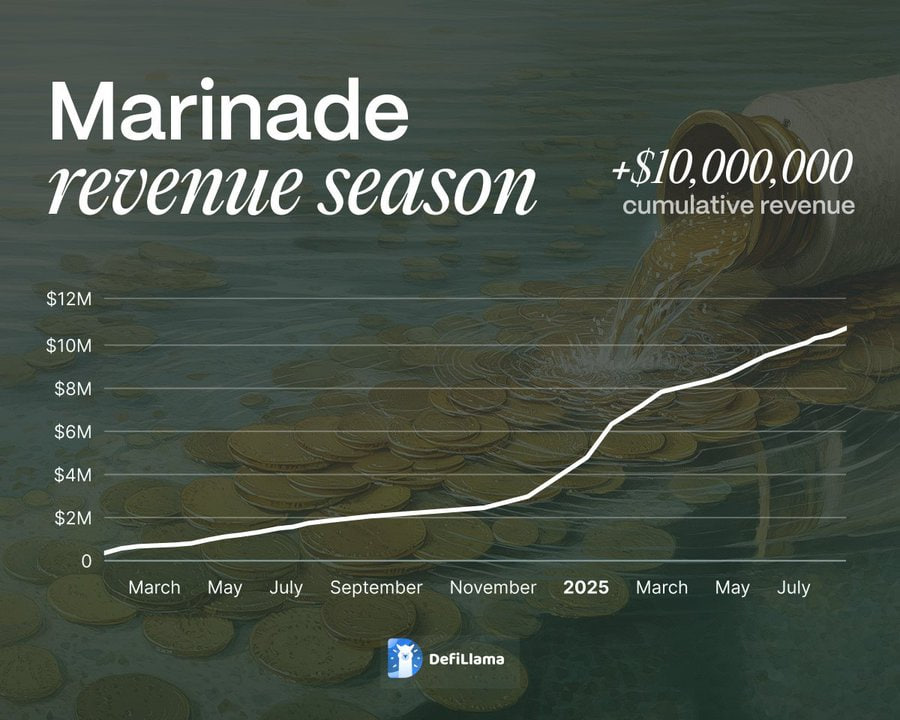The buyback model that talks about the value of the protocol using Marinade @MarinadeFinance as an example is attractive.
Group friends have always asked me to publish a piece about token economics protocols as the basis for valuation of early projects, and this article focuses on the DeFi track to talk about the valuation system.
The earliest protocol governance rights of YFI can guide liquidity, which is also the earliest way for governance rights to participate in income distribution.
Governance rights can participate in decision-making at the protocol level, and when prices start to fall, governance cannot maintain demand for a long time, which has been verified countless times, and UNI has been complained about not being empowered.
Current: The current uses of the Marinade $MNDE token include governance and validator voting rights to capture value through the "Stake Allocation Market", and then move to validator staking cap influence, reducing direct value capture.
Now: With Marinade Prepare for another September 2025, use the proceeds to buy back MNDE on the market.
So can buybacks support the long-term development of the project?
Projects such as Hype, Aave, dYdX, Jup, and Scamsoon use protocol revenue to buy and burn tokens from the market, why some stabilize prices and some take advantage of good shipments.
The most successful of these is hype.
Hyperliquid is unique in that buybacks are an integral part of its economic model.
These are based on HYPE's fundamentals and the open-side buyback mechanism through fundamentals.
$MNDE What about it?
Protocol value: Marinade's total locked amount (TVL) is 11 million SOL (approximately $2.1 billion at $195/SOL), of which native staking and liquid staking each account for about 50%. The protocol can generate over $10 million in revenue annually, while MNDE's current market capitalization is only about $45 million.
Compliance level: Marinade has been designated as the exclusive staking service provider for the first Solana ETF (Canary) in the United States, and has been connected to BitGo (SOC2 certified, with assets under management exceeding $100 billion).
In summary: With good fundamentals and current valuations undervalued, new governance proposals are fixing MNDE's value capture issues.
For projects with real income, buybacks are fundamental improvements, just as UNI does not need to turn on the sharing switch.

Every innovation in DeFi token economics is an exploration of the rights of tokens and the distribution of benefits to holders.
Synthetix initiated liquidity mining.
Compound granted governance rights to its tokens.
The YFI token is used to guide liquidity through liquidity mining and holds governance rights over the protocol.
Helium uses a multi-token model to distinguish between speculation and utility.
When ETH broke 4000, continuing such a Ponzi scheme to drive flywheel-level innovation.
24.63K
42
The content on this page is provided by third parties. Unless otherwise stated, OKX TR is not the author of the cited article(s) and does not claim any copyright in the materials. The content is provided for informational purposes only and does not represent the views of OKX TR. It is not intended to be an endorsement of any kind and should not be considered investment advice or a solicitation to buy or sell digital assets. To the extent generative AI is utilized to provide summaries or other information, such AI generated content may be inaccurate or inconsistent. Please read the linked article for more details and information. OKX TR is not responsible for content hosted on third party sites. Digital asset holdings, including stablecoins and NFTs, involve a high degree of risk and can fluctuate greatly. You should carefully consider whether trading or holding digital assets is suitable for you in light of your financial condition.

